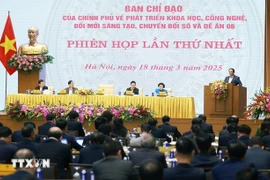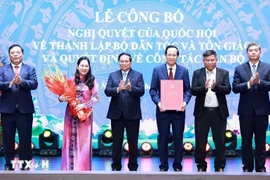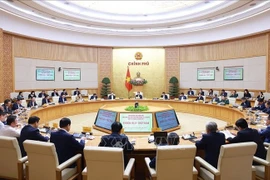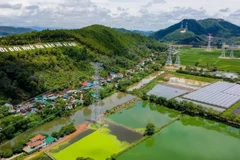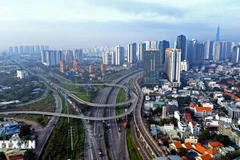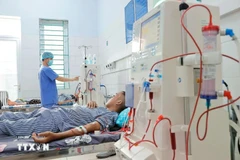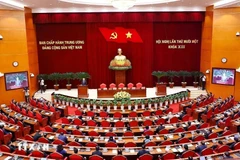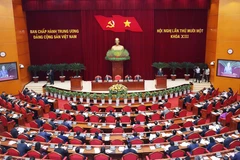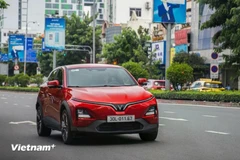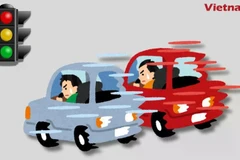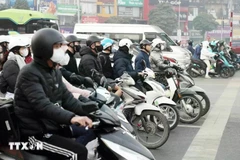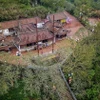Hanoi (VNA) - To enhance the effectiveness and efficiency of state management, the Politburo has issued a conclusion regarding the research and proposals to continue reorganising the structure of the political system, including the merger of some provincial-level administrative units, the elimination of district-level ones, and the further merger of commune-level units.
The issuance of Conclusion 127-KL/TW of the Politburo and the Secretariat on February 28, 2025 is seen as an important step in the administrative reform process, contributing to streamlining the apparatus, improving service quality for the people, and optimising resources.
Many experts believe that to effectively implement this policy, a suitable roadmap and concerted solutions are necessary to ensure the rationality of the organisational structure, avoid overburdening local administrations, and guarantee the maximum legitimate rights and interests of the people.
Policy should be piloted on small scale
According to Professor Dr. Dang Huy Huynh, Chairman of the Vietnam Heritage Tree Association, reorganising the administrative apparatus towards a leaner structure is a necessary step, in line with the trend of administrative reform in many countries worldwide, such as Denmark that cut the number of administrative units to save budget, optimise resources, and improve management efficiency; and France where administrative regions are also reduced.
Affirming his support for the policy, Huynh also pointed out some challenges that Vietnam needs to be aware of. One of them is that when district-level administrative units are eliminated, local administrations at the commune level may have to take on more responsibilities, leading to the risk of overload. This requires reasonable adjustments in organisation and staffing, as well as promoting the use of technology to reduce manual workloads.
In addition, to ensure the effective implementation of this policy, the professor proposed piloting it in small localities to assess impact and draw lessons before rolling it out nationwide. Furthermore, there needs to be stronger decentralisation to local authorities, enhancing the empowerment of commune-level administrations to ensure uninterrupted management work.
Regarding the promotion of digital transformation, he stressed that investing in an e-government system aims to support citizens in carrying out administrative procedures online, thereby easing the pressure on local administrative bodies. At the same time, it is essential to strengthen training and capacity-building for officials and civil servants, helping them adapt to such changes and improve their public management skills.
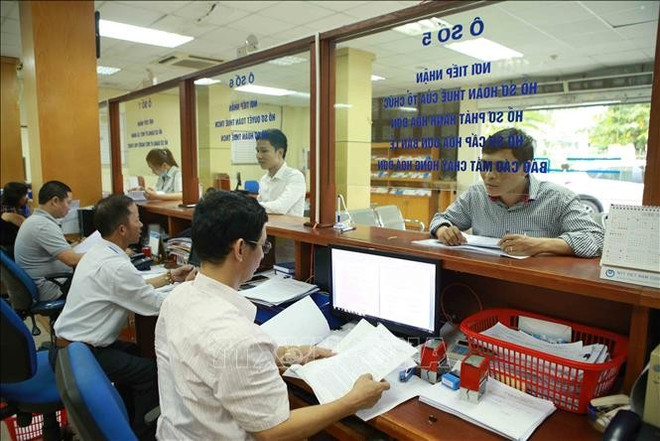
Ensuring financial resources and infrastructure is also a crucial factor in enabling commune-level governments to effectively carry out new tasks transferred from the district level. Streamlining the administrative apparatus is not only about merging administrative units but also requires revamping management methods, applying technology, and enhancing the capacity of the staff. If the work stays on the right track, it will be a breakthrough in administrative reform, contributing to improving state management efficiency and better serving the people.
Maximum convenience for the people
Not only has the policy received support from experts and scientists, but it has also been endorsed by many citizens. However, alongside this support, there are concerns regarding the accessibility of public administrative services once the district level is eliminated.
According to Nguyen Tien Vinh, Deputy Secretary of the Party Cell of Residential Area No. 3, Lac Trung street, Vinh Tuy ward, Hanoi’s Hai Ba Trung district, the elimination of the district level may require citizens to travel longer distances to complete administrative procedures. Currently, many people are used to going to district headquarters to handle paperwork such as birth registration, land use rights certification, and business registration.
If these procedures are moved to the provincial level or down to the commune level, a reasonable mechanism needs to be in place to ensure convenience for the people, Vinh proposed, mentioning the capacity of commune-level administrative units to handle additional tasks from the district level. Commune officials are already very busy, and adding more responsibilities could affect the speed of work processing. Therefore, there needs to be a specific plan to ensure no pressure on the system and service quality.
In light of this reality, Vinh suggested expanding online public administrative services, allowing citizens to complete procedures from home without needing to travel long distances.
Additionally, inter-regional administrative centres should be established to allow citizens to complete procedures quickly without travelling to the provincial level. Furthermore, there is a need to strengthen communication and guidance to help people understand the implementation roadmap and the new operational methods, so they can proactively adapt to the changes.
If the government has a clear plan and invests in technology, the elimination of the district level will make sense, helping to reduce administrative procedures and make things more convenient for the people./.

